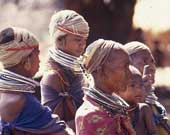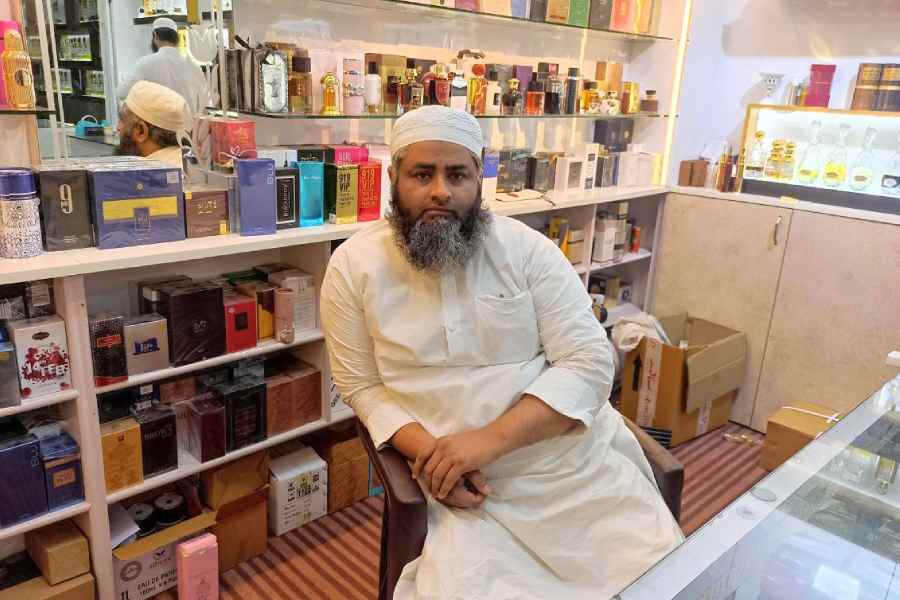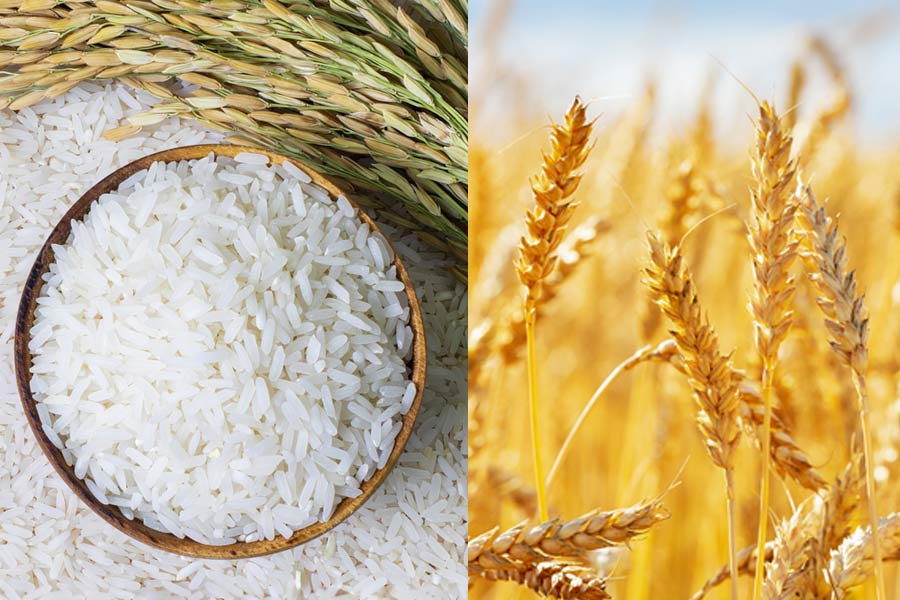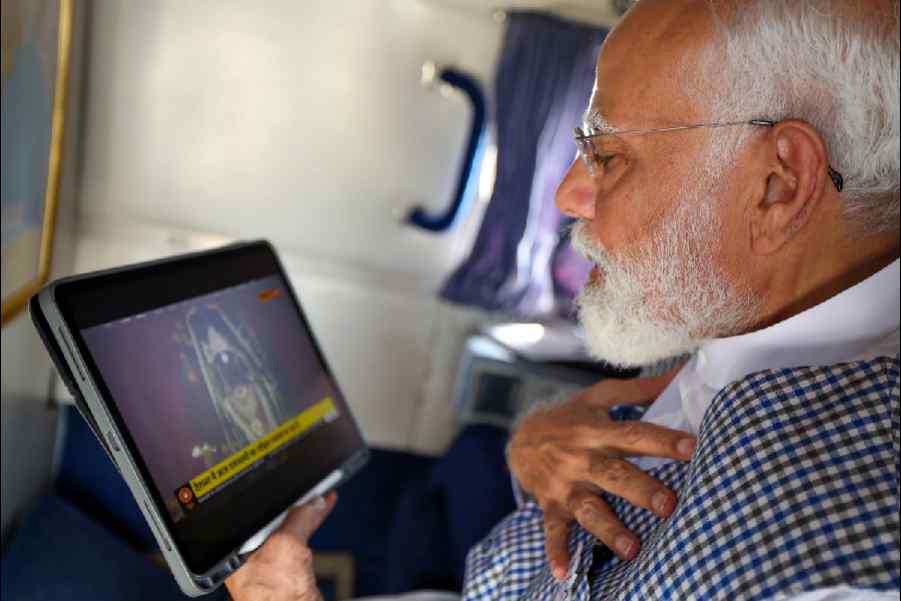 |
Are the Kurmis of Jharkhand tribals? The issue has sparked a debate in social circles, with arguments in favour and against the claims of their Dravidian or Aryan ancestry. The Kurmis’ claims of originally being tribals, delisted in 1931, has been countered by tribal anthropologists who believe no such list existed before the Constitution of India was drafted.
?Any tribe or caste is known by its language and social rituals. Tribal languages have been recognised by the Linguistic Survey of India and Kurmali, spoken by Kurmis, does not figure in the list. Kurmali is a mix of Bengali, Oriya, Maghi and Hindi, while listed tribals have distinct languages like Santhali or Mundari,? observed Santhali Bhasha Morcha activist Salkhan Murmu.
Other tribal anthropologists, particularly Karma Oraon, teacher of anthropology at Ranchi University, contends that the totemestic origin of the Kurmi gotras (sects) cannot be traced whereas the Santhal totem can be identified by their use of surnames like Soren, Marandi, Hansdak etc. All Kurmis use the surname Mahato, making it difficult to determine whether they had a totem name or not.
The government gazetteer says that only in rare cases, as reported by Lacey in the Census Report of 1933, does a Kurmi prides himself on having a totem name like Bak (a bird). ?Of late, there has been a tendency among Kurmis to upgrade themselves to the status of Kshatriyas. This is probably to get more people in their fold ? the Chotanagpur contingent was also admitted in the Kurmi fold through a resolution passed in a conclave held in Muzaffarpur in 1929. Three delegates from Manbhum represented the Chotanagpur Kurmis at the conclave. It was decided that there was no difference between Kurmis of Chotanagpur and Kurmis of Bihar,? says the Dhanbad gazetteer. The gazetteer further points out that the three delegates attending the conclave returned donning a janeu (sacred thread).
The Muzaffarpur conclave was followed by another one in Ghagrajuri, Manbhum. This one was attended by Kurmis of Uttar Pradesh and Bihar and it was agreed that there would be inter-dining and inter-marriage between the Kurmis of Bihar and Chotanagpur, the gazetteer says.
However, another group of tribal anthropologists and political activists claim that the the same gazetteer has given indications of Kurmis being a tribe. ?Writing later, Risley found them to be short, dark complexioned and distinct from the Kurmis of Bihar. He ascribed to them a Dravidian origin and he had good grounds to do so as there is little difference between then and the Santhals, with whom they seem to have lived for generations,? the Dhanbnad gazetteer reads.
Former BJP MP from Ranchi and Kurmi leader Ram Tahal Chaudhary, who was spearheading a movement for recognition of Kurmis as a tribe, says Risley?s theory was later confirmed by Grierson, who believe they were ?definitely of a Dravidian stock? and may have had a language of their own, which had ?been replaced by either Bengali or Kurmali and a very corrupt form of eastern Maghi with a large sprinkling of Bengali on it.?
The gazetteer, Ram says, also indicates that the Kurmis retained, until recently, the Kolarian village system, in which the Mahato is the village headman and controls the village affairs like the Santhal Manjhis (village heads).
Writing in 1911, Coupland, accepted the view put forward by Risley and Grierson. He accepted that Kurmi Mahatos of Manbhum and Dhanbad were distinct from the Kurmis of Bihar.
The matter seems to be a more political one though. Different organisations struggling for a domicile policy were demanding 90 per cent reservation in group D government jobs for the original settlers of the state. However, after a pact with the then chief minister, Babulal Marandi, the reservation was agreed at 73 per cent. The quota, however, was struck down by court. After re-organisation of reservation, the quota of 28 per cent, fixed for the OBCs, was also slashed down to 18 per recent. This, political observers feel is the cause of the tribal status cry.
Observes feel that recommending Kurmis and Telis is nothing but a ?political stunt. Had the government provided a constitutional shield of 73 per cent reservation, such demands for tribal status would not have come at all, they say
Just a day before the BJP's national executive meeting in Ranchi, chief minister Arjun Munda convened an emergent Cabinet meeting to recommend Telis and Kurmis for Scheduled Tribe status despite the fact that the Tribal Welfare Research Institute had informed the state government that Kurmi?s could not be considered as a tribe.
Poltical observers feel that the move was aimed at check-mating the United Progressive Alliance shortly before the Assembly elections. The BJP review committee had analysed that a reason behind the party?s rout in the Lok Sabha elections was alienation of Kurmis from the party. This time, the party wants to woo Kurmis and Telis.
The state government has referred the matter to the Union government. It is the Centre which will have to bring out a Bill in the Parliament to get Telis and Kurmis in the list. Political observers and Opposition parties have , however, expressed doubts over Munda?s real intentions.
?What were they doing for four years when there was a BJP-led government at the Centre? If they were serious about the Kurmis and Telis, they could have made the recommendation earlier to have a Bill enacted by the NDA government,? said an observer.
The BJP is propagating that it has done its job and it was now up to the Centre to address the issue. Meanwhile, Kurmis have been organising victory processions and praising Munda and the BJP.
Salman Ravi










